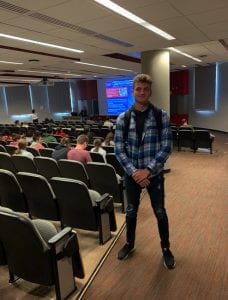As the semester comes to a close, so does our First Year Project. As a refresher, I sought to learn a new song on guitar. Specifically, I wanted to learn how to play River Flows in You by Yiruma. This is one of many songs that were originally played on the piano, but adapted into guitar tablature by various artists. Although I have been playing guitar for nearly six years, one of the techniques I have never focused on is called fingerpicking, the main technique used to play this song. Going in, I knew that this was going to be a challenge, and I was right!
The first trouble I had was time management and motivation. Even before this project began, I found it hard to practice guitar while also keeping up with schoolwork. That held true after this project began as well. If I could go back to the beginning of the semester, I would focus on scheduling my time out more. As seen in the hour log, practice time mostly happened at the start of the project and the end of the project. If the practice time had been more spread out over the semester, the outcome would have been much better. Despite this, I still was able to learn the song in its entirety. Given a more structured schedule, the performance would have been more accurate. The other main challenge was learning how to fingerpick in general. Every time I learn a new guitar technique, no matter which, it takes me a good amount of time to perfect it. Fingerpicking, and playing the acoustic guitar in general, is no different. Even at the end, there is certainly room for improvement. Regardless, here is the final result!
Below, as I said before, is the log of my practice hours. I noted in the document that I spent more time practicing than stated in the log. In casual practicing, I spent a nominal amount of time working on the song. Despite the result not being perfect, I am still happy with how this project turned out. I believe this project has certainly prepared me for my capstone next year, and I can’t wait to see what comes of it next spring!





